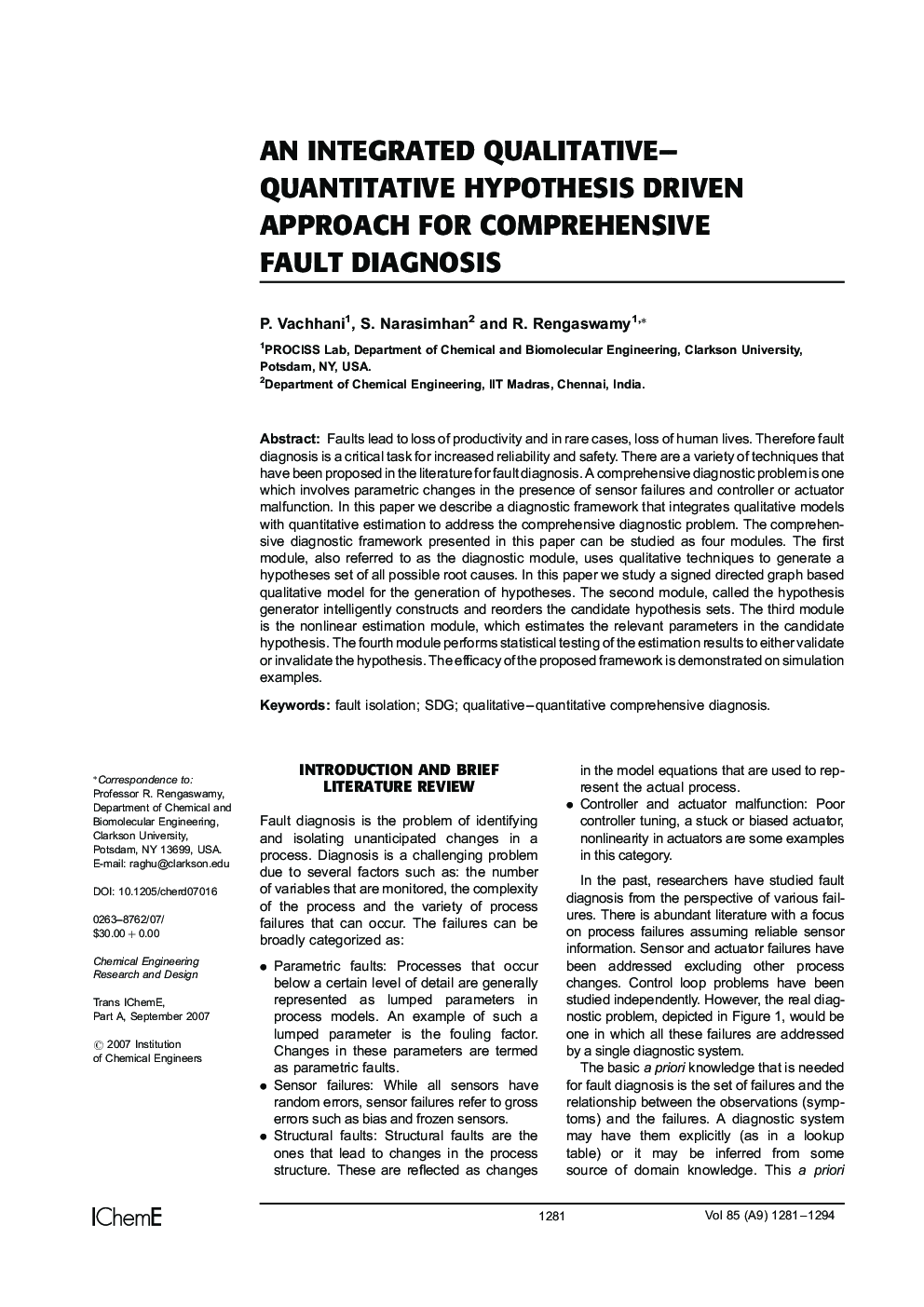| Article ID | Journal | Published Year | Pages | File Type |
|---|---|---|---|---|
| 622563 | Chemical Engineering Research and Design | 2007 | 14 Pages |
Abstract
Faults lead to loss of productivity and in rare cases, loss of human lives. Therefore fault diagnosis is a critical task for increased reliability and safety. There are a variety of techniques that have been proposed in the literature for fault diagnosis. A comprehensive diagnostic problem is one which involves parametric changes in the presence of sensor failures and controller or actuator malfunction. In this paper we describe a diagnostic framework that integrates qualitative models with quantitative estimation to address the comprehensive diagnostic problem. The comprehensive diagnostic framework presented in this paper can be studied as four modules. The first module, also referred to as the diagnostic module, uses qualitative techniques to generate a hypotheses set of all possible root causes. In this paper we study a signed directed graph based qualitative model for the generation of hypotheses. The second module, called the hypothesis generator intelligently constructs and reorders the candidate hypothesis sets. The third module is the nonlinear estimation module, which estimates the relevant parameters in the candidate hypothesis. The fourth module performs statistical testing of the estimation results to either validate or invalidate the hypothesis. The efficacy of the proposed framework is demonstrated on simulation examples.
Keywords
Related Topics
Physical Sciences and Engineering
Chemical Engineering
Filtration and Separation
Authors
P. Vachhani, S. Narasimhan, R. Rengaswamy,
